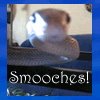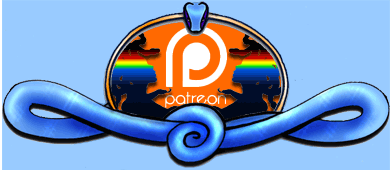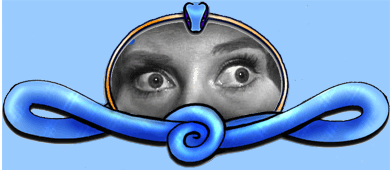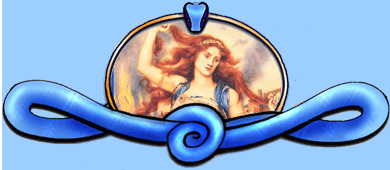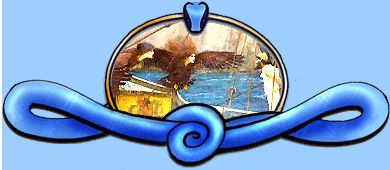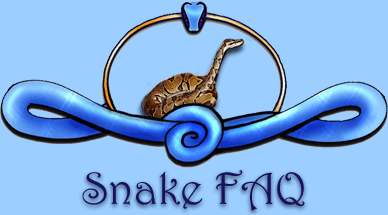Blue Beauty Care Sheet

Vietnamese Blue Beauties aka Orthriophis taeniurus callicyanous,
formerly known as Orthriophis taeniurus ssp and Elaphe taeniura ssp.
General Information:
Size: These are some of the longest rat snakes at typical lengths of 7 to 8 feet and weighing a little more than 3 pounds on average, with rare occurrences of up to 11 feet.
Lifespan: Blue Beauties can live anywhere from 15 to 30 years.

Description: These are stunning snakes, long and slender with a blue-grey base color offset with cream and darker blue markings in 4 different patterns that change as you move down the body. Black orbital stripes accentuate the eyes while the chin and underside remain a creamy white to yellow. There are also a possibly a couple of morphs, such as Anery or Hypo. The tail stripe is the reason for their other name, the "Stripe-tailed Rat Snake". This name is also used for Taiwan Beauty Snakes, Ridley's Stripe-Tailed and Striped Trinket Snakes. Hatchlings can vary in color and grow bluer as they get older.

Behavior: Blue Beauties have a reputation for being nervous snakes, but with regular handling they can be quite docile and charming pets. They're also diurnal and largely active during the day, which is a nice change of pace from more rarely seen nocturnal snakes. They're very active and a handful when out of the enclosure so be ready for a workout!
Distribution: Blue Beauties are colubrids native to the Vietnam-Thailand-Myanmar areas of Southeast Asia, from heavy forests to cultivated fields and mountainous areas.
Care Information:
Difficulty Rating: 2. VBBs are very long and active snakes who need lots of room and regular handling. Not recommended as a first snake but they're excellent feeders.
Enclosure: The minimum enclosure size for an adult Blue Beauty is somewhere around 72"L x 30"D x 24"H, but your snake will appreciate as much room to explore as you can give it so long as there are places to hide, climb, and lounge. Only one snake per enclosure except for breeding!

A young snake or juvenile will need more hides for larger enclosures to reduce stress, but the very smallest you should use for a hatchling should be a 20L. Critter Cages are great starter habitats for hatchlings, nice secure lids at low prices. You WILL need a very secure lid or door! These are talented escape artists, and if you're using an aquarium as shown below you will need clips to keep the lid securely in place.
Substrate: I have used Carefresh Ultra and Indented Kraft Paper for my reptiles, but there are several good substrates out there for you to choose from. Newspaper and Kraft Paper is nice and easy to clean but not as aesthetic and your Beauties may enjoy burrowing.

Coconut husk based substrates, Aspen, or Carefresh are decorative substrates that are ideal for Blue Beauties. Indented Kraft Paper is absorbant and a nice natural brown shade, very tidy and currently my substrate of choice. Cedar is deadly to reptiles, do not use Cedar bedding! Gravel, sand, mulch, and corn cob are not recommended for these snakes.
Temps: The ideal temperatures for Blue Beauties are 75-85 degrees. I've gotten a lot of mixed reviews on whether or not they need a temperature gradient, but I recommend getting an under tank heater and thermostat for your enclosure. Herpstat and Helix are very dependable thermostats for your snakes!
Humidity/Water: Blue Beauties need a water dish that is large enough for the snake to soak but not large enough for them to submerge their whole length at once. For my adults I use ceramic dog dishes. My female especially loves to soak, but quickly gets restless and never soaks long enough for us to have any concerns.
They do well with the option of a humid hide if you live in a dry climate and use a glass or wood enclosure. A humid hide consists of an appropriately sized plastic tub with a hole cut in it as an entrance, and with moist potting soil lining the bottom.

Do not use distilled or chlorinated water! Chlorine is dangerous to reptiles, and the distillation process removes all of the natural nutrients from water that animals need.
Accessories: VBBs love to bask in high places such as on top of their hides or on ledges and cruise along branches over and under. The more you give them to adventure on, the more enjoyable watching them will be. Of course, this also means more items for you to clean. So basically, whatever works for you.
Like all snakes, they do need at least one hide preferably elongated like a Creature Cubbyhole. Creature Cubbyholes have been unfortunately discontinued, but something similar would be great. I'll update this link soon as I find a suitable replacement! These snakes seem to do better with something oblong.
Feeding: Hatchlings and juveniles - 1 or 2 pink/ fuzzy mice to 1 or 2 pink/fuzzy rats every 7 days; Adults - 1 medium rat or 2 small rats every 7 to 14 days. I feed mine frozen/thawed. Your Beauty will typically sleep off his or her dinner for a day or two after. Please don't handle your snake for about 48 hours after feeding time to avoid risk of regurgitation.

Choosing to feed in a separate container or in the enclosure is up to you. We feed ours in the enclosure with no problems. Some are more comfortable eating in the enclosure and being moved only stresses them, and others don't care what you do so long as there is a rat in front of them. It all depends on what works best for you and your pet.
Handling: Beauties need regular handling to stay tame, especially at a young age, and like many colubrids are speedy active curious snakes! Mine tend to anchor themselves with their tail around my arm or wrist then endeavor to explore with the rest of their bodies. It's important to keep an eye on them, because they will happily wander off to points unknown.

Otherwise, like most snakes, keep them gently but firmly supported. I find it useful when returning a snake to their enclosure to point their head into the hide and ease them in that way. It helps prevent one end heading out
just as you're getting the other end back in. It's very important that you give your young beauty hands on attention to get them off to a great well socialized start!
Acclimation: New arrivals need at least a week or sometimes even two of just settling in, getting used to the new enclosure and routine, before they get handled. Just to get them off to a good start. :)
Please feel free to write about your own experiences or questions below in regards to this spectacular snake as well. I'd love to hear from you!
